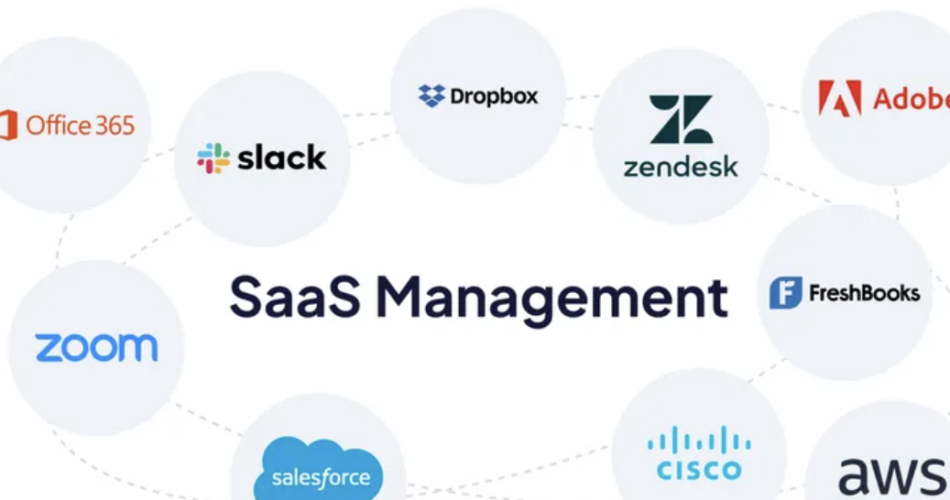In today’s fast-paced digital world, Software as a Service (SaaS) has emerged as a game-changer for businesses of all sizes. From startups to Fortune 500 companies, SaaS is transforming how organizations operate, innovate, and grow. But what exactly is SaaS, and why is it so powerful? In this article, we’ll explore the ins and outs of SaaS, its benefits, challenges, and how it’s shaping the future of business.
Contents
What is SaaS?

What is SaaS?
Software as a Service (SaaS) is a cloud-based software delivery model where applications are hosted by a third-party provider and made available to customers over the internet. Unlike traditional software that requires installation on individual devices, SaaS applications are accessed through web browsers, making them highly accessible and scalable.
Examples of popular SaaS products include:
- Google Workspace (Gmail, Google Docs, Google Drive)
- Salesforce (CRM software)
- Slack (team collaboration tool)
- Zoom (video conferencing platform)
How SaaS Works
SaaS operates on a subscription-based model, where users pay a recurring fee (monthly or annually) to access the software. Here’s how it works:
- Cloud Hosting: The software is hosted on remote servers managed by the Software as a Service provider.
- Internet Access: Users access the software via a web browser or app.
- Automatic Updates: The provider handles maintenance, updates, and security patches.
- Scalability: Users can easily upgrade or downgrade their plans based on their needs.
Why SaaS is Powerful: Key Benefits
-
Cost-Effectiveness
- Software as a Service eliminates the need for expensive hardware and software installations.
- Businesses pay only for what they use, reducing upfront costs.
-
Accessibility
- Software as a Service applications can be accessed from anywhere with an internet connection, enabling remote work and collaboration.
-
Scalability
- SaaS solutions grow with your business. You can add or remove users, features, and storage as needed.
-
Automatic Updates
- Providers handle software updates, ensuring users always have access to the latest features and security patches.
-
Ease of Use
- SaaS applications are designed to be user-friendly, with intuitive interfaces and minimal training required.
-
Integration Capabilities
- Software as a Service tools often integrate seamlessly with other software, creating a unified ecosystem for businesses.
-
Enhanced Security
- Reputable Software as a Service providers invest heavily in security measures, protecting user data from breaches and cyber threats.
Industries Transformed by SaaS
Software as a Service is revolutionizing a wide range of industries, including:
-
Healthcare
- Software as a Service platforms like Epic and Cerner streamline patient records, appointments, and billing.
-
Education
- Tools like Google Classroom and Canvas enable online learning and collaboration.
-
Finance
- Software as a Service solutions like QuickBooks and Xero simplify accounting and financial management.
-
Retail
- Platforms like Shopify and Square empower businesses to manage online stores and payments.
-
Marketing
- Software as a Service tools like HubSpot and Mailchimp automate marketing campaigns and customer engagement.
Challenges of SaaS
While Software as a Service offers numerous benefits, it’s not without its challenges:
-
Data Security Concerns
- Storing sensitive data on third-party servers can raise security and privacy issues.
-
Internet Dependency
- Software as a Service applications require a stable internet connection, which can be a limitation in areas with poor connectivity.
-
Vendor Lock-In
- Switching Software as a Service providers can be difficult due to data migration challenges and contract terms.
-
Limited Customization
- Some SaaS solutions may not offer the level of customization needed for specific business requirements.
-
Subscription Costs
- While Software as a Service is cost-effective in the short term, recurring fees can add up over time.
The Future of SaaS
The SaaS industry is poised for continued growth, driven by advancements in technology and changing business needs. Here’s what the future holds:
-
AI and Machine Learning Integration
- Software as a Service platforms will increasingly leverage AI to offer predictive analytics, automation, and personalized experiences.
-
Vertical Software as a Service
- Industry-specific SaaS solutions will cater to niche markets, offering tailored features and functionalities.
-
Low-Code/No-Code Platforms
- Tools like Airtable and Bubble will empower non-technical users to build custom applications.
-
Enhanced Security Measures
- Providers will invest in advanced security protocols to address growing cybersecurity threats.
-
Global Expansion
- Software as a Service adoption will continue to rise in emerging markets, driven by increasing internet penetration and digital transformation.
How to Choose the Right SaaS Solution
With so many options available, selecting the right Software as a Service solution can be overwhelming. Here are some tips:
- Identify Your Needs: Determine the specific problems you want to solve.
- Evaluate Features: Look for tools that offer the features and integrations you need.
- Check Reviews: Read customer reviews and testimonials to gauge reliability and performance.
- Test the Software: Take advantage of free trials or demos to see if the software meets your expectations.
- Consider Scalability: Choose a solution that can grow with your business.
Conclusion
The power of Software as a Service lies in its ability to simplify, streamline, and scale business operations. By leveraging cloud-based software, organizations can reduce costs, improve efficiency, and stay competitive in the digital age. While challenges like data security and vendor lock-in exist, the benefits far outweigh the drawbacks for most businesses.
As Software as a Service continues to evolve, it will play an even greater role in shaping the future of work, innovation, and collaboration. Whether you’re a small business owner or a corporate executive, now is the time to embrace Software as a Service and unlock its full potential.
